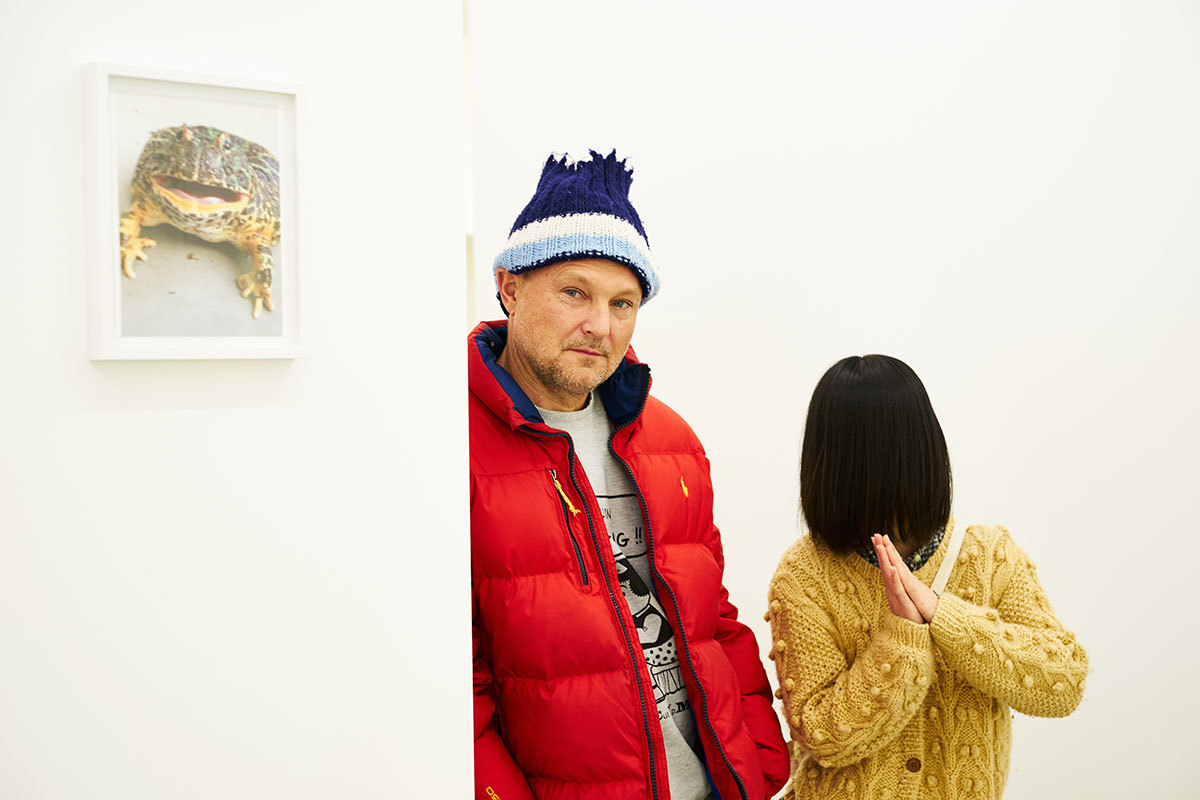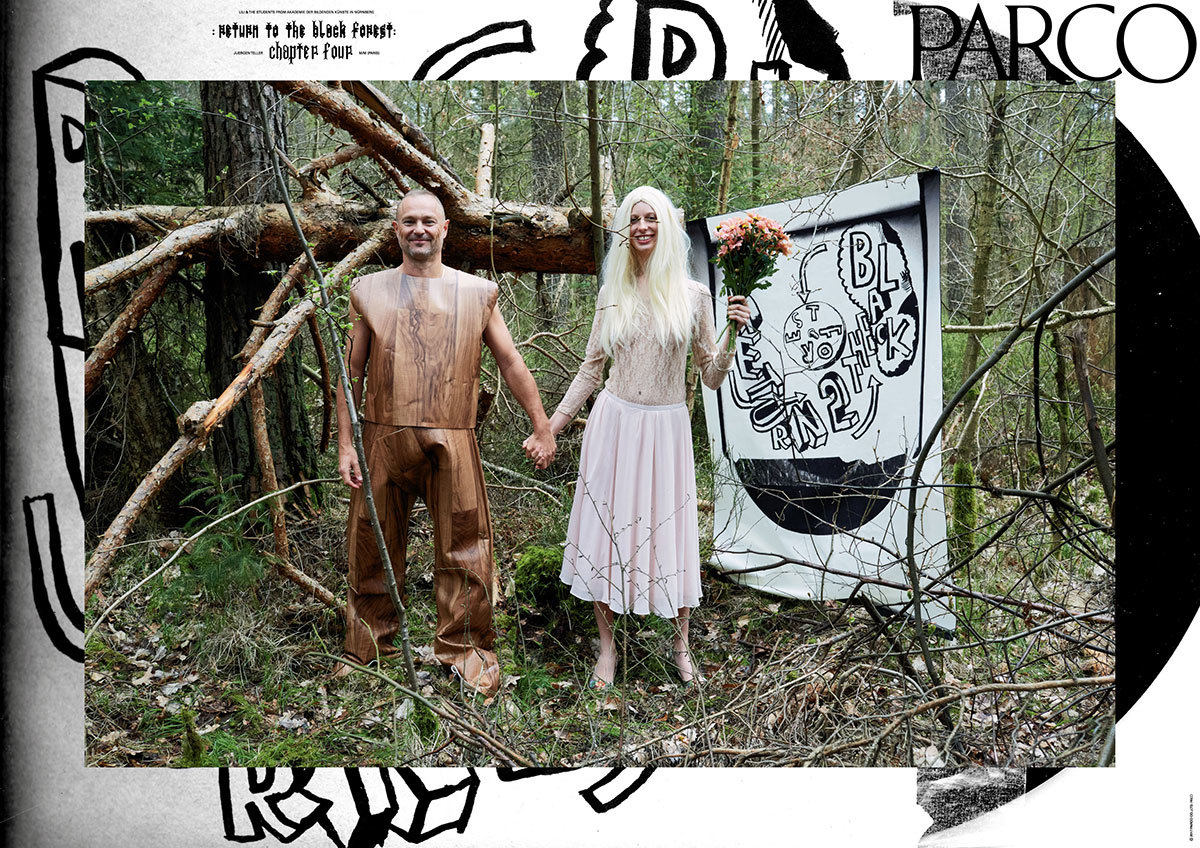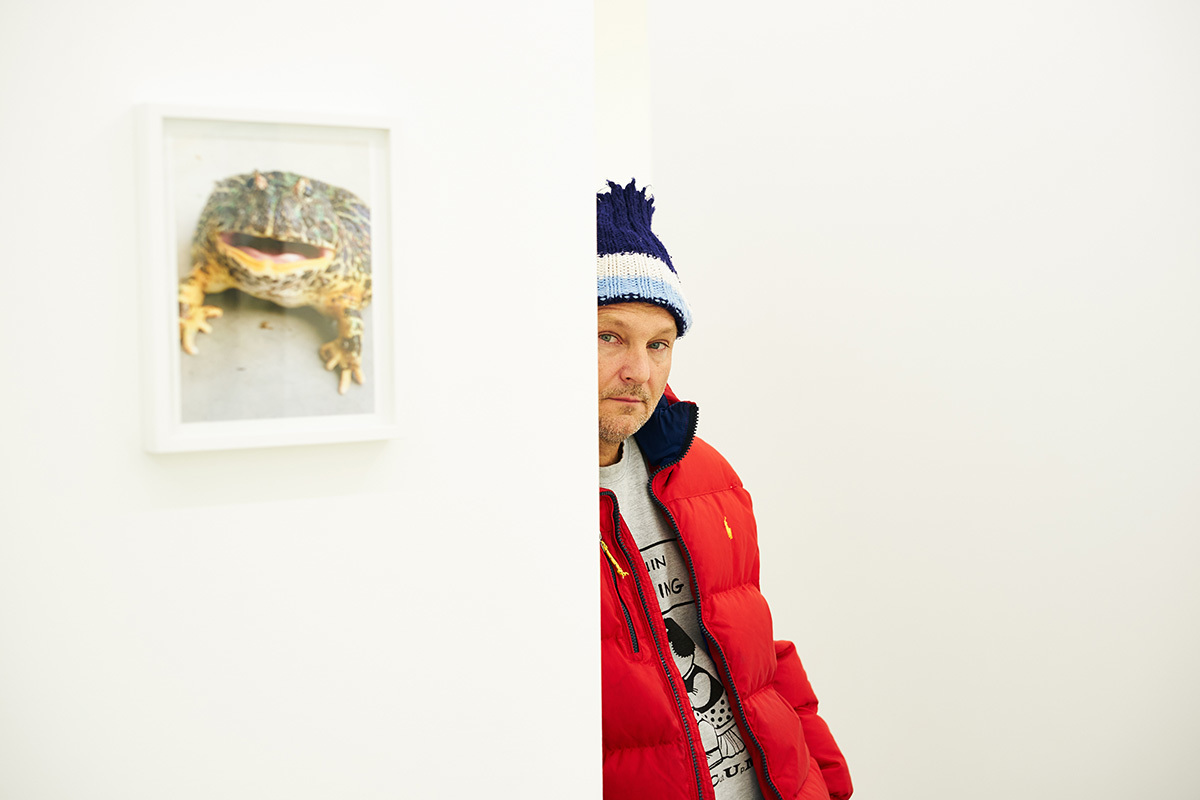Photographer Juergen Teller captures vivid subjects in a bleached out, oversaturated world. He has a talent for always communicating his own unique point of view, even in commercial shoots. His style is instantly recognisable. “Commercial work is work made for clients. Art is where you do what you want. Each requires a totally different way of thinking, but actually, my approach remains the same,” Juergen says. That he retains a strong sense of artistry no matter what he’s shooting for, has given rise to his reputation for moving so easily between the art world and the commercial.
Back in 1986, Juergen made the move to London after studying photography in Munich, Germany. His first big leap to fame came when his portrait of Sinéad O’Connor graced the cover of her hit single “Nothing Compares 2 U,” and from there he began to steadily build his career as a fashion photographer. He became well known for his raw style of film photography. Speaking of what was one of his favorite pieces in his kit, he says: “I used the hell out of the silver Contax G2. The flash on it was fantastic.” But with the decline of traditional photography and print magazines, he too began to distance himself from film cameras. “One turning point that motivated me to make the change happened seven years ago. I was shooting a recipe book for some hotel, and as usual I was using my Contax. But the client wasn’t happy with how it turned out, so I ran off to a local shop to buy a digital camera. The autofocus let me get a really sharp image and the client was really pleased with the results. It was really great, high-class cuisine, but in my photos it had looked cheap, like something from a Chinese takeaway. That’s when I realized how good digital cameras could be.” Juergen was hooked at last by the appeal of the digital world he’d been avoiding for so long. In a drastic change from his previous work, his recent imagery filters a more grounded subject matter through his own surreal lens.

The digital era had a big influence on Juergen’s style. Always striving to experiment with new things, he’s recently been trying his hand at photographic layouts and collages: “I can’t do the work of combining my photos by myself, so I work alongside a post-production team in the studio who gives me a hand.” And as for his Contax: “I used to look like I was just carrying around a camera as a hobby or something, but now that I’ve got this big Canon DSLR it really feels like I’m walking around saying ‘Look at me, I’m a photographer!’ I couldn’t get used to that at first, and I kinda stopped wanting to take out my camera when people were looking at me,” he laughs as he recalls his first digital forays. But it seems many clients still want him to return to his analog roots: “A lot of people tell me they like my film work, but I just keep telling them ‘no.’ I still want to keep trying new stuff.”
Something else occupying Teller’s time of late is a number of projects involving students at the Academy of Fine Arts in Nuremberg. “I started doing projects with the students three years ago. The best thing is that they all call me ‘Professor Teller!'” he laughs. “Since I’ve started these projects, I’ve had a lot of calls from clients wanting me to do something with the students, working as a team — right now we’re actually working on a project about youth for a German fashion magazine.”

Among his work with the students of the Academy is the creation of advertising visuals for the Japanese department store Parco. “It was very challenging. Parco is in the fashion retail business, but we couldn’t use clothes from high-end brands like I’m used to. So we thought we’d try to make a more fantastical world.” The team created modern fairy tales of sorts — fitting for a school in the heart of Germany, the origin of so many fantastic stories. Overall, the project will consist of four “chapters”: following chapters one and two, Into the Black Forest and Deep Into the Black Forest (both released for fall/winter 16), chapters three and four, Escape the Black Forest and Return to the Black Forest, are set for spring/summer 17. “The students just got right down to doing the things they each do best. They just announced ‘I can knit!’ or ‘I’ll make clothes!’ and that’s how we ended up with the characters for the stories.” Teller also plays a part in the videos, in the unique role of a wooden man. The students took responsibility for the creation of the costumes, as well as acting as the cast of the videos. “With commercial jobs, you sometimes just aren’t able to do the things that the client wants you to do… but the students just say ‘of course, we can do that!'” Clearly, Juergen himself has been affected by working with the young creators: “They’re really crazy, and I think that’s something totally beautiful. When I’m with them, I feel like I’m back in my student years again myself. They give me energy.”
Juergen returned to Japan in February to put on his first solo show in the country in 25 years, titled Teller ga Kaeru. The exhibition features a number of photos he has been taking based around the motifs of frogs and plates (“Teller” being the German word for “plate”). “When I told Francesco Bonami [the curator] that I had all these photos of frogs on plates, we decided to make that the theme of the show. He also decided on the name of the show too — the word “kaeru” has the meanings of both “frog” and “to return” in Japanese. And just as the title suggests, Juergen was making his return to Japan. He documented his stay, with the gallery as his stage. Wherever Teller travels in the world he draws energy and power from young people, and keeps striving to work with them to make new things.

“I don’t want to do things like tell the students exactly what they ought to study, or say things like ‘that piece of work sucks.’ I want to do something together with them. That applies to the commercial work too, but I do still want to give them a challenge. The client work has real deadlines, and I want them to know how everything actually works.” This considerate approach to his students might stem in part from his experiences in 1986, when the photographer Nick Knight took a bewildered young Juergen, who had only just moved to London, under his wing. “Nick gave me a lot of courage. He also gave me hope. His wife helped me out too by setting up chances to show my portfolio to art directors, inviting me to record company sales promotions, and so on. They were really kind to me, and they helped me out so much. I don’t think I would have been able to do anything if I’d been on my own.” He recalls that time nostalgically: “If Nick hadn’t been there to give me hope, I really wouldn’t have known how to make my way as a photographer.” Beyond simply drawing motivation from his students, Juergen aims to pass on the aspirational attitude and fighting spirit he received from his tutors.
Juergen Teller: Teller Ga Kaeru, curated by Francesco Bonami, is open until April 1, 2017 at Blum & Poe, Tokyo
Credits
Text Nozomi Kinoshita
Portrait Photography Masayuki Shioda
